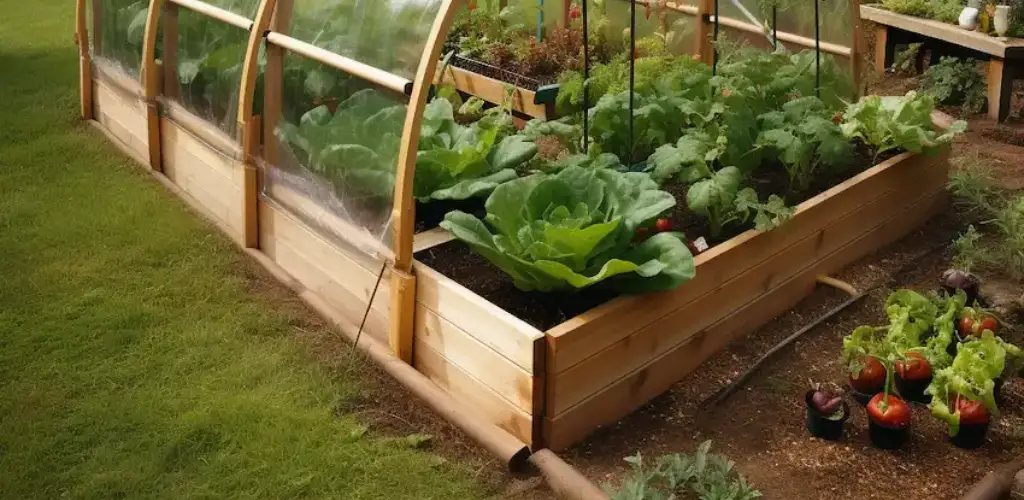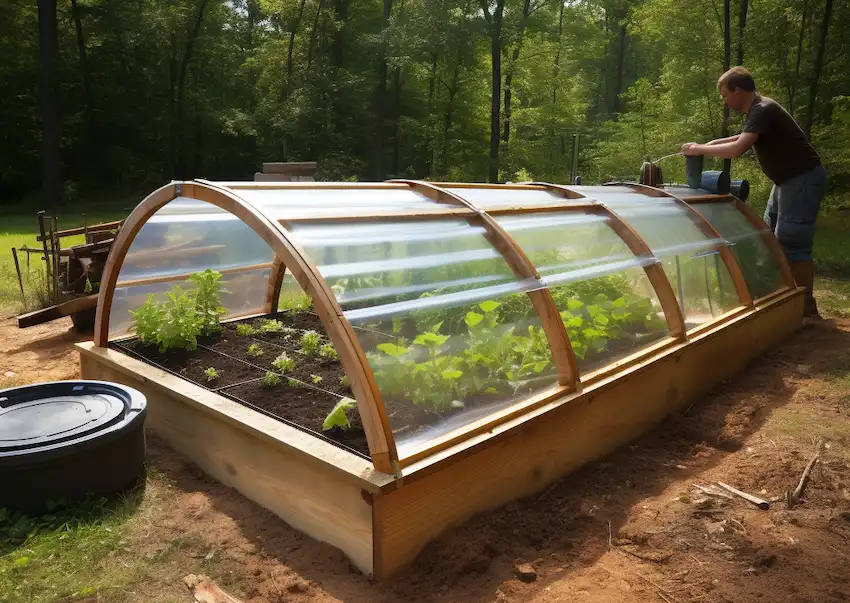
Building a pop-up hoop house for your raised bed garden is an excellent way to extend your growing season, protect your plants from harsh weather conditions, and keep pests away. This detailed guide will walk you through the process of building a pop-up hoop house, ensuring that even beginners can get involved and achieve great results.
Materials required:
- PVC pipes (1/2 inch diameter)
- Heavy duty plastic film (6 mil)
- Hinges
- Screws (stainless steel)
- Wooden boards (for the raised bed frame)
- Pipe clamps
- UV-resistant cable ties
- Tools: drill, saw, tape measure, staple gun
Step 1: Prepare your raised bed
If you haven’t already, build your raised bed out of wooden planks. Make sure it is stable and well positioned in your garden, ideally in a location that receives sufficient sunlight. The size of your raised bed will determine the dimensions of your hoop house. So plan accordingly.
Step 2: Measure and Cut PVC Pipes
Measure the length of your raised bed and cut PVC pipe to create hoops that span the entire width of the bed. The number of tires depends on the length of your bed; Aim for a tire every 2 to 3 feet. Gently bend the pipes and insert the ends into the ground on either side of the bed or secure them to the wooden frame with pipe clamps to form arches.
Step 3: Install Hinges
Choose one side of the raised bed as a solid base for your hoop house. Attach hinges to the wooden frame on the opposite side where the opening will be. These hinges make it easy to open and close your hoop house for access to the plants.
Step 4: Attach PVC pipes to the hinges
Attach the PVC pipes to the hinge side of the raised bed with screws and pipe clamps. Make sure the pipes are firmly attached and that the structure opens and closes smoothly.
Step 5: Cover with plastic wrap
Drape the heavy-duty plastic sheeting over the PVC tires, making sure there is enough overhang to cover the ends of the raised bed. Trim the plastic as needed, leaving excess material to attach to the floor or frame.

Step 6: Attach the plastic film
Use UV-resistant cable ties to secure the plastic film tightly to the PVC straps. Staple the plastic to the wooden frame on the hinge side, making sure it is tight and secure. Bury the excess plastic in the ground on the solid side and ends or attach it to the frame to protect the interior from the elements.
Step 7: Final Adjustments
Test the pop-up hoop house by opening and closing it to make sure the plastic is not overly stretched or loose. Make any necessary adjustments to the hinges, plastic or frame to improve functionality.
Step 8: Ventilation
To avoid overheating on sunny days, provide ventilation by rolling up the side of the plastic wrap or adding additional vents. This helps regulate the temperature and humidity in the hoop house.
Maintenance tips:
- Periodically inspect the structure for damage or wear, especially after extreme weather conditions.
- Replace the plastic wrap as needed to ensure it remains clear and durable.
- Lubricate the hinges regularly to ensure smooth operation.
Building a pop-up hoop house for your raised bed garden is a worthwhile project that can significantly benefit your plants by providing them with a more controlled environment. By following these detailed steps, you will create a functional and durable hoop house that will enrich your gardening experience. Whether you want to extend your growing season or protect your plants from pests, a pop-up hoop house is a practical and effective solution.
Inspired by that? Share the article with your friends!
